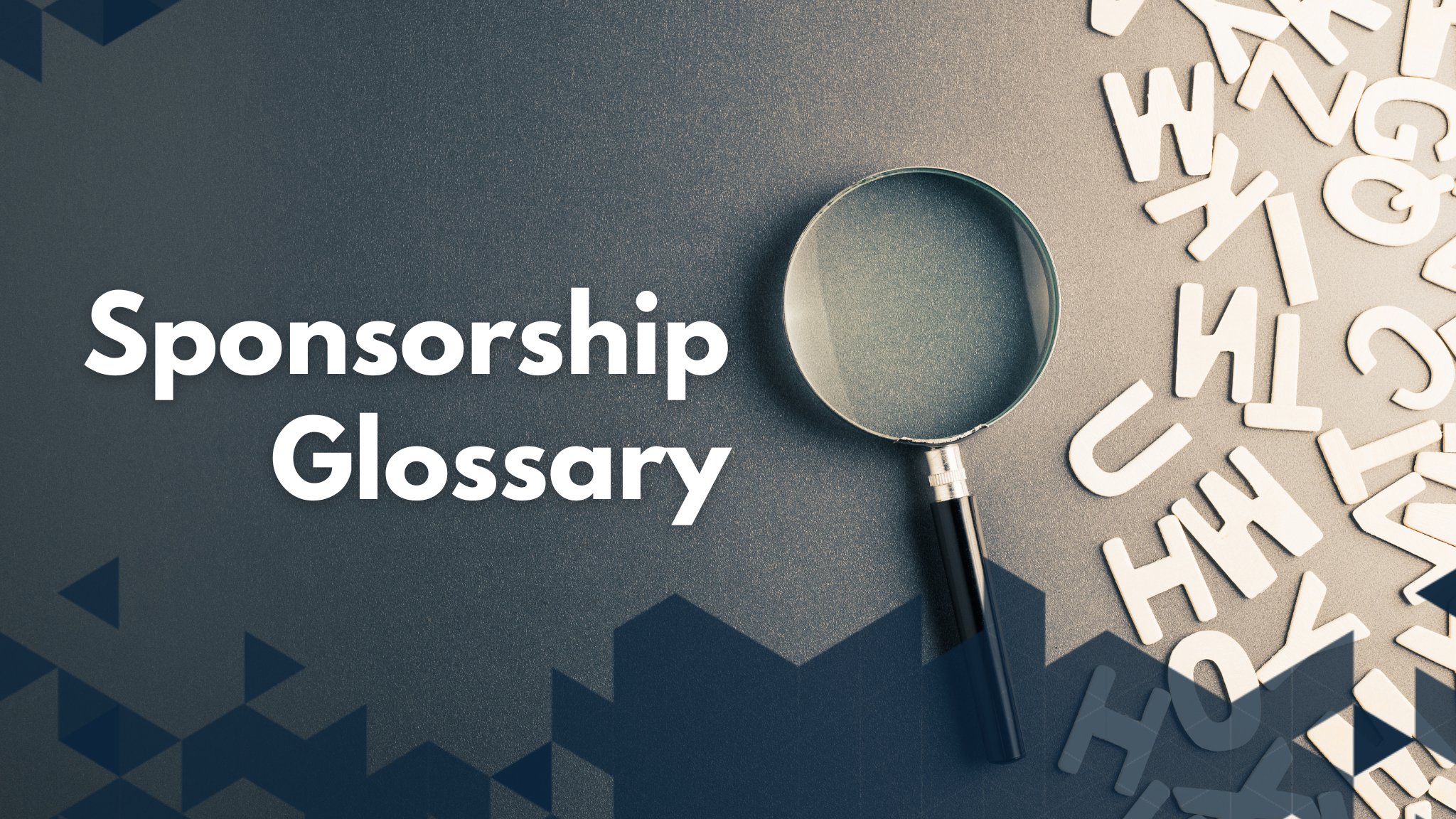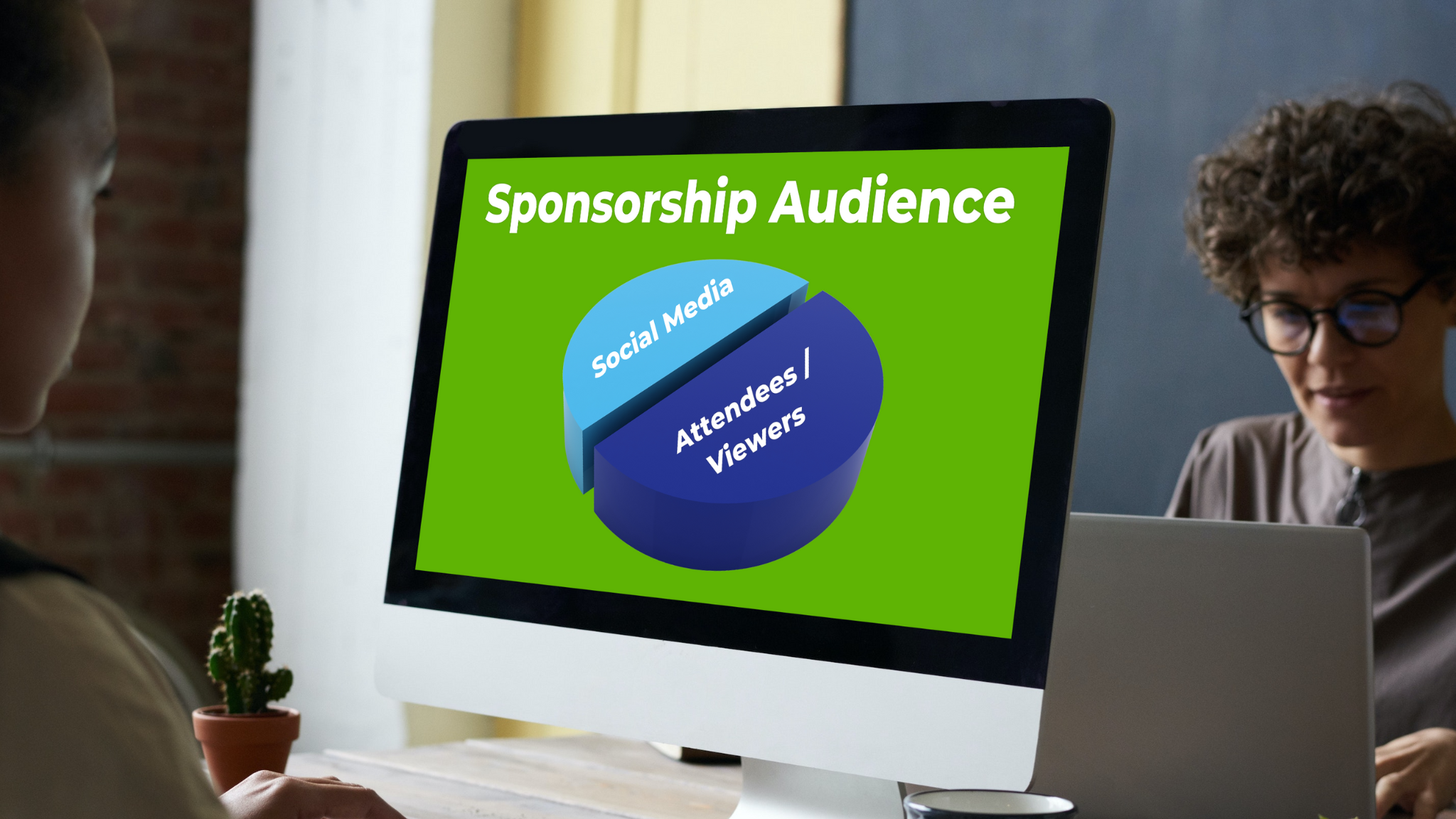
Key Sponsorship Terms You Should Know
We created our Sponsorship Glossary so you can talk the talk and sound like a pro in the sponsorship game. Beyond these helpful terms, if you are interested in learning how to get sponsored, or how to get more sponsors, we suggest you read our ultimate guide “How To Get Sponsored – Advice From Agency Experts.”
Bookmark this page as we are always adding new terms. We also have a PDF version of our Sponsorship Glossary that you can print and keep handy for reference.
What is Sponsorship?
“Sponsorship”
A sponsorship is when a group or business provides financial support or invests money to partner with another, such as an event, team, or person. It’s not just about the cash; it’s a partnership. The one giving the money gains visibility and recognition, while the one receiving it gets the financial boost they need. For it to work best, both sides must have shared goals and a vision for success.
We wanted to provide a basic definition of sponsorship to help those beginning the process of seeking sponsorship. As a leading sponsorship agency and creators of the “Sponsorship Success Method,” we know sponsorship – what it is, how it works, how to get it, and how to manage it.
Sponsorship Industry Terms and Language
The sponsorship industry has its own language. We defined sponsorship for you, but you should also know some important sponsorship terms. CHARGE wants you to access the language of sponsorship to be successful.
CHARGE’S Sponsorship Terms Glossary: A List of Key Terms To Know From A Sponsorship Agency
“Sponsorship Activation”
Any activity bringing the sponsorship to life. Sometimes called “leverage” activities. An example is a 10’x10’ tent where brands give out t-shirts in exchange for lead information. Read this for more Sponsorship Activation strategies and examples.
“Sponsorship Asset”
Any item or benefit sold to the sponsor as part of the sponsorship deal. Sometimes called “inventory.” Assets can include social media posts, website links, signage, tickets/parking, and activation space.
“Sponsorship Audience”
The property’s attendees, members, fans, or followers. Also known as a target audience. The sponsors hope to reach this audience of potential customers or consumers. Accurate and detailed sponsorship audience descriptions play a crucial role in sponsorship sales.
“Sponsorship Category”
Classification of a potential sponsor is usually based on common products or services. Common categories include carbonated beverages, wellness products, consumer electronics, QSR (quick service restaurants), and more.
“Sponsorship Entitlement”
A sponsorship entitlement refers to the rights and benefits that a sponsor receives as part of a sponsorship. Entitlements vary widely from sponsorship to sponsorship and can include benefits like marketing rights, logo usage, advertising opportunities, exclusive content creation, or product sampling.
“Sponsorship Exclusivity”
Sponsorship exclusivity is the right of the sponsors to be the only sponsor within their designated category. It is a negotiated right within an agreement and normally costs more to gain exclusive rights. If you see someone referred to as an “official sponsor,” they may be the exclusive sponsor in their category.
“Sponsorship Fit”
Sponsorship fit refers to the alignment between the sponsor’s values, goals, target audience, and the sponsored entity. A well-fitted partnership can amplify brand messaging, enhance consumer trust, and even increase sales and brand loyalty.
“Sponsorship Fulfillment”
In the sponsorship agreement, a property promises to deliver benefits to the sponsor. Fulfillment is the act of fulfilling that promise. It’s when the sponsor receives the assets and benefits of the partnership.
“Sponsorship Hospitality”
Opportunities to host clients, customers, or employees within the sponsorship. Hospitality assets can range from luxury suites to general tickets and parking passes.
“Sponsorship Value-In-Kind” or “In-Kind Sponsorship”
The act of offering a product or service in lieu of cash sponsorships. For example, $20,000 of water and soda is provided to an event in exchange for assets instead of $20,000 cash. Sometimes called “trade.”
“IP Rights” (Intellectual Property Rights)
The sponsor’s right to utilize the logo and trademarks of the property during their activation of the sponsorship.
“Presenting Sponsor”
This is a high-level sponsor who provides significant financial support, but not as much as the title sponsor. They are mentioned with the event, like “Event presented by [Sponsor’s Name],” but their name isn’t part of the event’s official title. They receive significant advertising but less than the title sponsor.
“Sponsorship KPIs” (Key Performance Indicators)
Metrics that measure how something is performed. KPIs can include attendance, social media, tv ratings, leads generated, and more.
“Sponsorship Levels” aka “Sponsorship Tiers”
The terms “sponsorship levels” and “sponsorship tiers” are often used interchangeably in the context of sponsorship agreements. Both refer to grouping different sponsorship packages offered to sponsors, usually based on the value or extent of benefits provided. The most common example is Gold / Silver / Bronze, and you should read this to learn what we suggest instead of sponsorship levels.
“Naming Rights”
Like a title sponsorship, naming rights are among the highest sponsorship levels. A naming rights sponsor acquires the exclusive rights to attach its brand name to a physical venue or property (i.e., stadiums, arenas, or academic buildings).
“Sponsorship Property”
The entity or organization that is selling the sponsorship. They control the assets. Sometimes called the “rights-holder.”
“Sponsorship ROI” (Return on Investment)
The expected outcome a sponsor is hoping to receive from their sponsorship investment. For example, a bank may want to increase its brand awareness in a certain region based on sponsorship.
“Sample Rights”
The right to sample your product to an audience but not sell.
“Sell Rights”
The right to sell a product directly to consumers, but not sample.
“Sponsorship Deck”
The sponsorship deck, also known as the Sponsorship Pitch Deck, is the visual presentation or document that introduces your sponsorship opportunity to a prospect. It describes you and offers the prospect a list of potential sponsorship benefits. You deliver the sponsorship deck when first contacting the prospect to kickstart the conversation. Since you do not know what the prospect wants or needs, the sponsorship deck does NOT include a price. Learn how to build a sponsorship deck here.
“Sponsorship Proposal”
Once you know what the prospect wants, you create a sponsorship proposal that details the specific benefits of your program and includes a price (which can be cash or value-in-kind). The sponsorship proposal includes much of the same information as your sponsorship deck.
“Sponsorship Process”
A sponsorship process is a series of steps or stages to establish, manage, and evaluate a sponsorship relationship.
“Title Sponsor”
This is the main sponsor that gives the most money and gets the most attention. The highest relationship level is placing a sponsor’s name in the event. For example, “The [Brand Name] Marathon.” A title sponsor is often associated with events, programs, or initiatives. Title sponsor arrangements are usually shorter term than naming rights deals.



